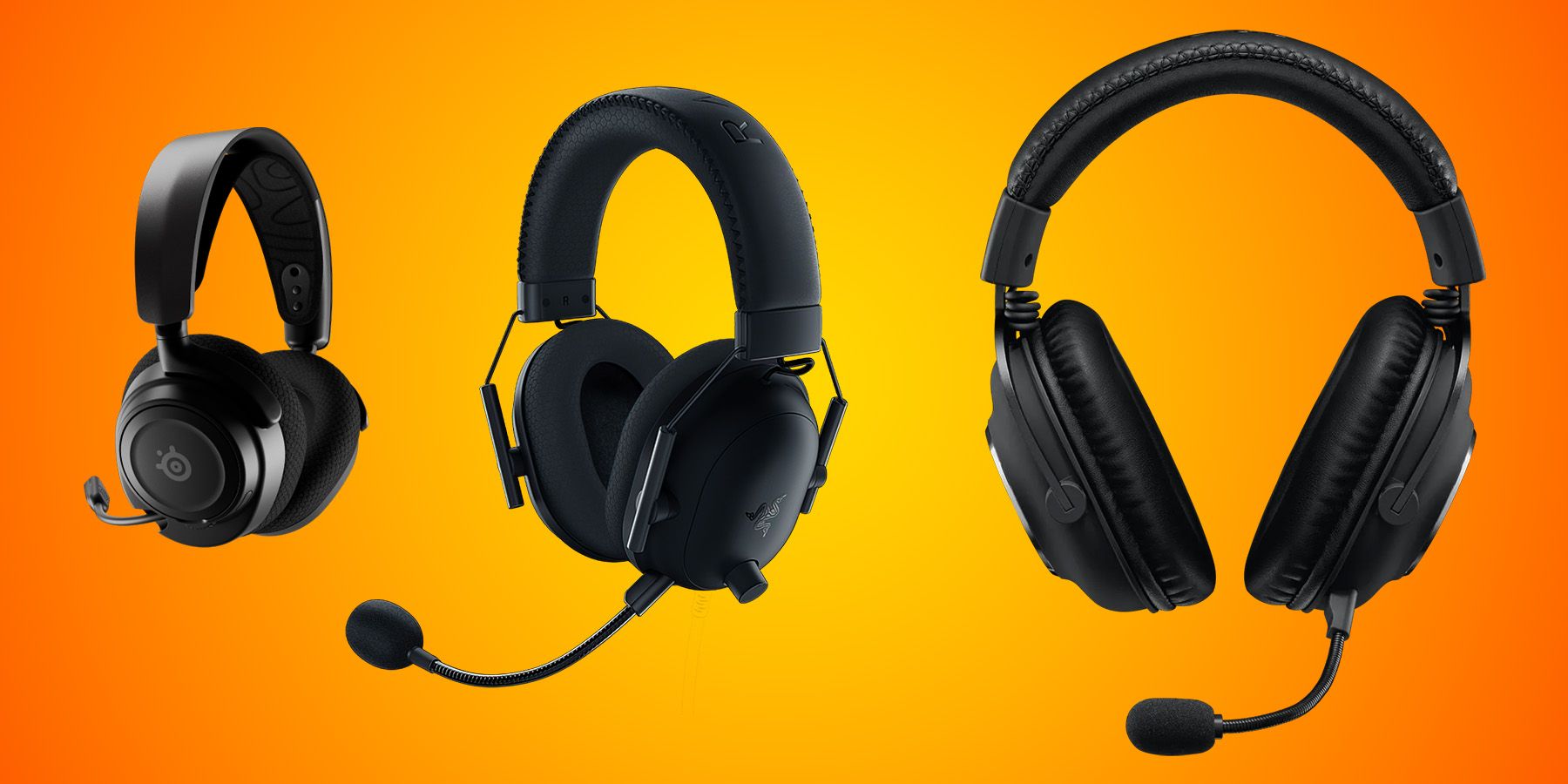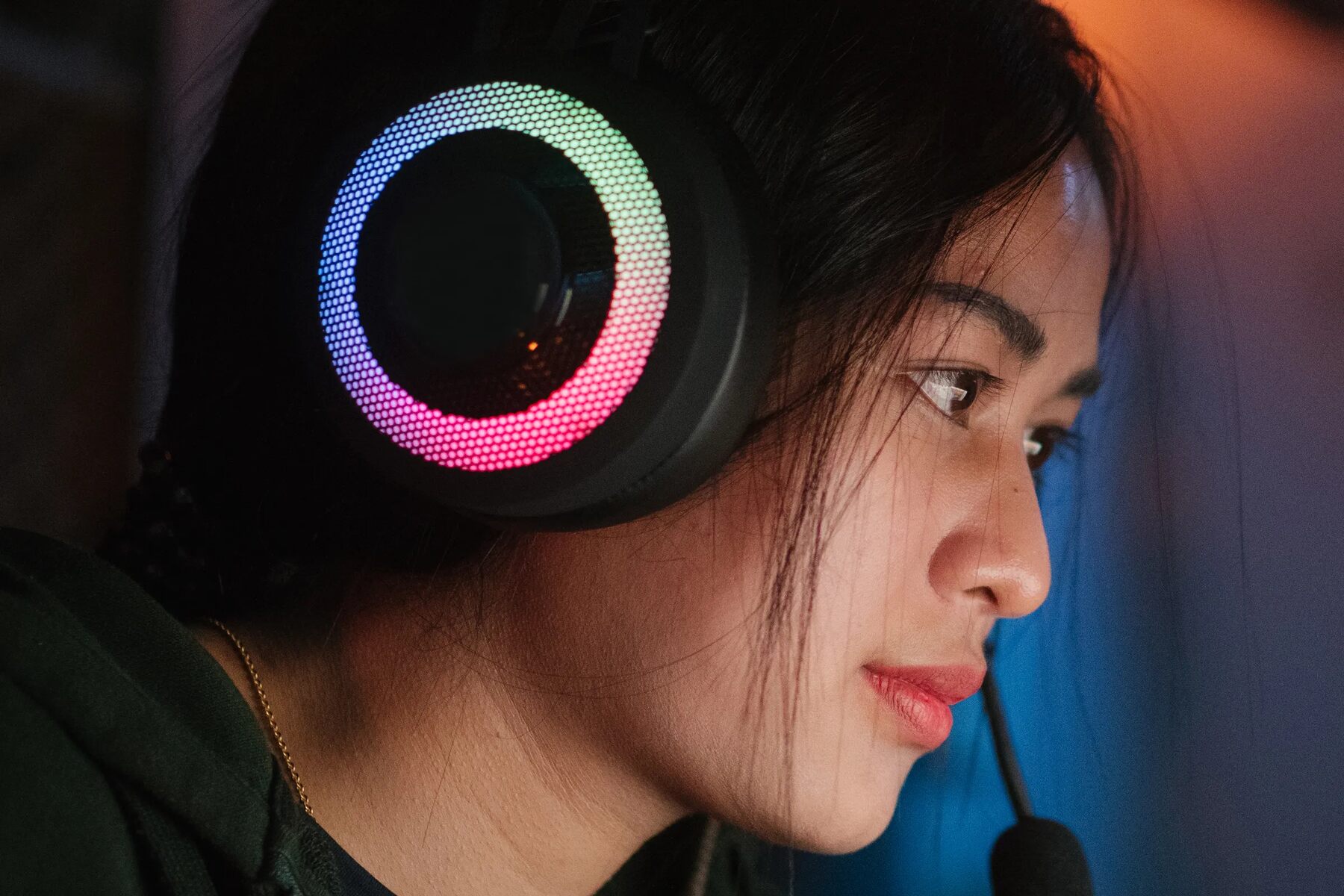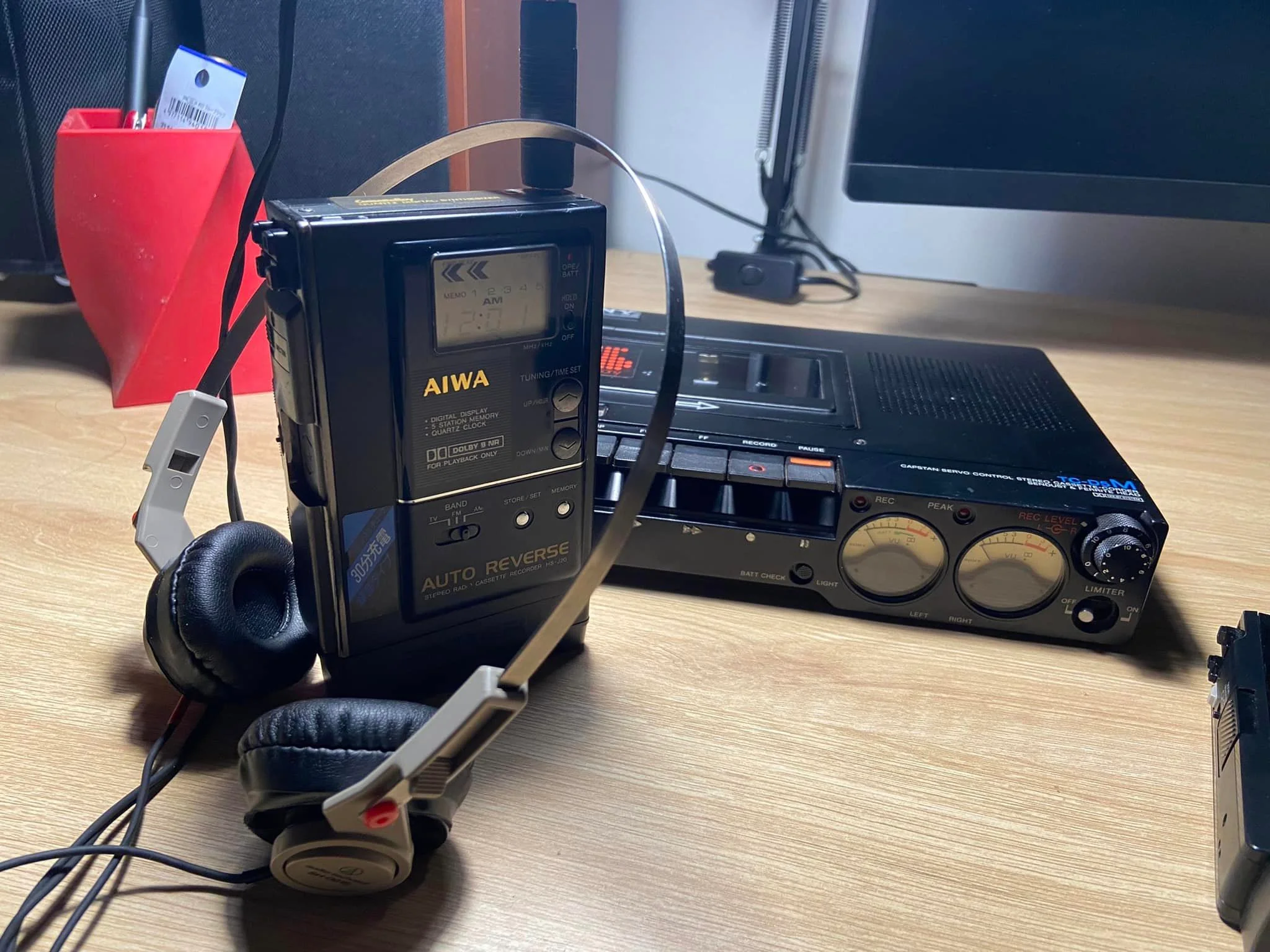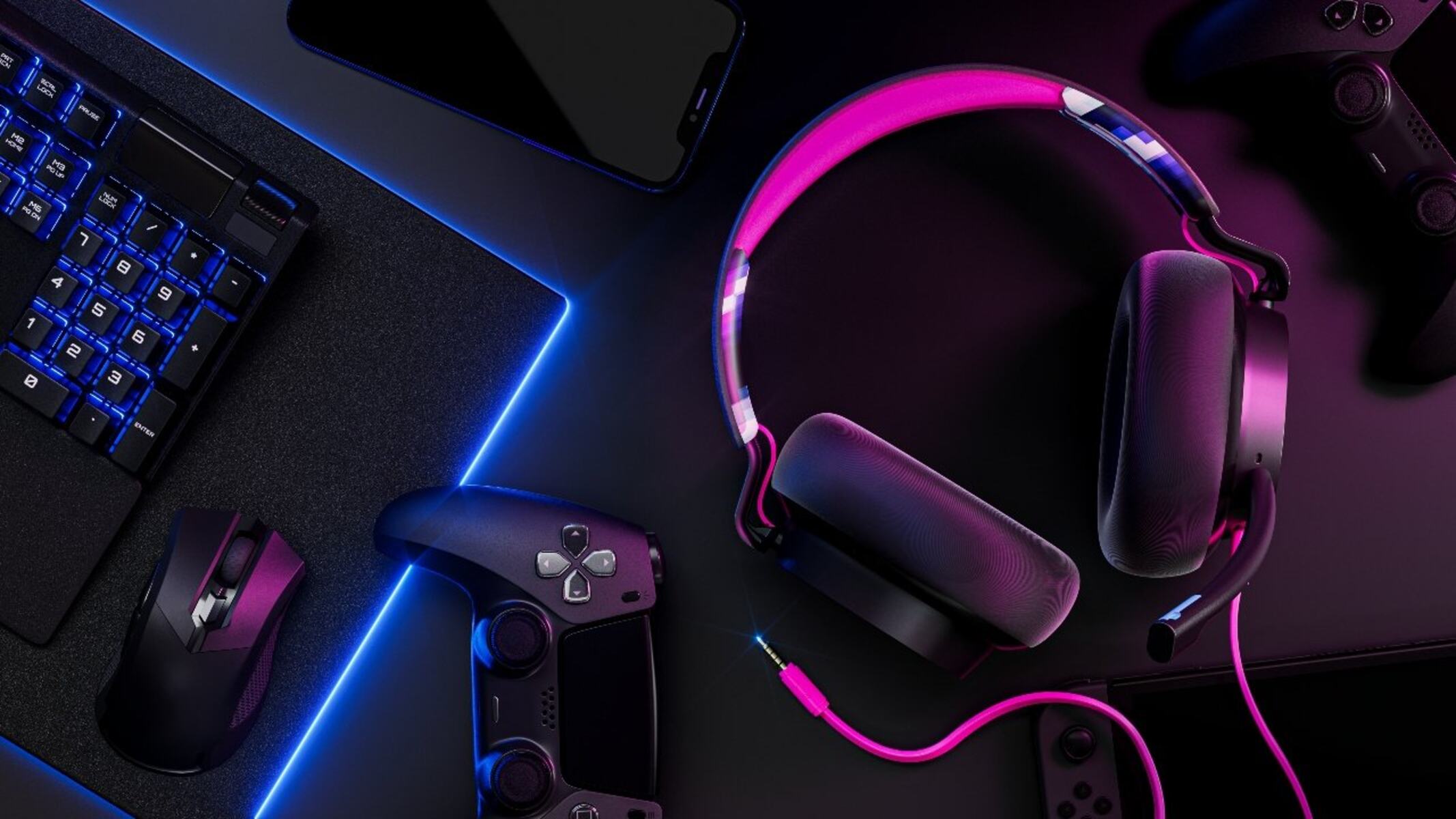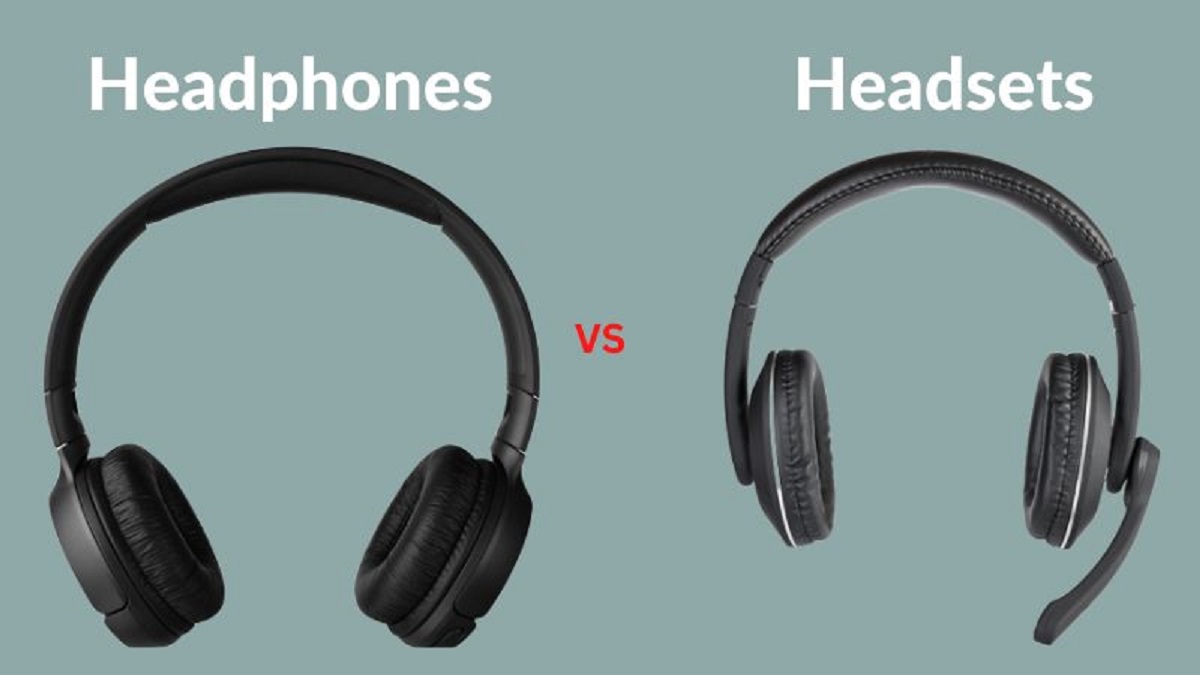Introduction
In today's fast-paced world, technology has become an integral part of our daily lives. From smartphones to smartwatches, we are constantly surrounded by gadgets that aim to simplify and enhance our experiences. One such gadget that has gained widespread popularity is the headset. Whether used for gaming, communication, or entertainment, headsets have become a ubiquitous accessory, offering a multitude of functionalities.
As we delve into the intricacies of headsets, it becomes evident that these devices are not merely accessories but rather essential tools that serve a variety of purposes. Understanding the inner workings and capabilities of headsets is crucial in comprehending their significance in our modern, tech-driven society.
In this comprehensive exploration, we will uncover the fundamental aspects of headsets, ranging from their basic components to their diverse applications. By gaining insight into the functionality and purpose of headsets, we can develop a deeper appreciation for their role in facilitating seamless communication, immersive entertainment, and enhanced productivity. Let's embark on this enlightening journey to unravel the purpose and significance of headsets in our digital age.
What is a Headset?
A headset is a compact audio device that combines headphones with a microphone, typically worn over the head. It serves as a versatile tool for various audio-related activities, such as listening to music, engaging in voice calls, participating in online gaming, and even dictating voice commands to digital assistants. The design of a headset allows for hands-free communication and audio playback, making it a convenient and essential accessory for individuals across different domains.
The primary distinguishing feature of a headset is its integration of both headphones and a microphone into a single device. The headphones enable the user to listen to audio content, whether it be music, podcasts, or the sound effects of a virtual environment, with clarity and precision. Meanwhile, the microphone component facilitates two-way communication by capturing the user's voice and transmitting it to the intended recipient, enabling seamless conversations and interactions in various settings.
Headsets come in a variety of designs, including over-ear, on-ear, and in-ear configurations, catering to diverse preferences and usage scenarios. Additionally, they can be wired or wireless, with wireless variants leveraging Bluetooth technology for hassle-free connectivity to compatible devices.
The evolution of headsets has brought about advanced features, such as noise-cancellation technology, which enhances the listening experience by minimizing external distractions. Furthermore, some headsets are equipped with virtual surround sound capabilities, delivering an immersive audio environment for gaming, movies, and virtual reality applications.
In essence, a headset serves as a versatile audio accessory that empowers users to engage in hands-free communication, enjoy high-quality audio playback, and immerse themselves in various digital experiences. Its multifaceted nature and adaptability make it an indispensable tool for individuals seeking seamless and efficient audio interactions in both personal and professional spheres.
The Components of a Headset
A headset comprises several essential components that collectively contribute to its functionality and versatility. Understanding these components provides insight into the intricate engineering and design that enable headsets to deliver high-quality audio experiences and seamless communication. Let's delve into the key components that constitute a typical headset:
-
Headphones: The headphones, also known as earcups, are the primary audio output component of a headset. They are designed to cover or fit inside the user's ears, delivering clear and immersive sound reproduction. Headphones come in various designs, including over-ear, on-ear, and in-ear, each offering distinct benefits in terms of comfort and audio performance. The quality of the headphones significantly influences the overall audio experience, with factors such as driver size, frequency response, and impedance impacting sound clarity and depth.
-
Microphone: A crucial component of a headset is the microphone, which captures the user's voice and facilitates two-way communication. The microphone is strategically positioned to capture vocal input effectively, enabling clear and intelligible transmission of speech during voice calls, online gaming, and voice commands. Modern headsets feature noise-cancelling microphones that reduce background noise, ensuring that the user's voice remains prominent and discernible in various environments.
-
Headband: The headband forms the structural framework of the headset, providing support and stability when worn over the head. It is typically adjustable to accommodate different head sizes and shapes, offering a comfortable and secure fit for extended usage. The headband may feature padding or cushioning to enhance comfort, minimizing pressure on the user's head during prolonged wear.
-
Cables or Wireless Connectivity: In wired headsets, cables play a critical role in transmitting audio signals from the source device to the headphones and microphone. These cables are often equipped with inline controls for adjusting volume, muting the microphone, and managing call functions. On the other hand, wireless headsets utilize Bluetooth or proprietary wireless technologies to establish seamless connections with compatible devices, offering freedom of movement and eliminating cable clutter.
-
Controls and Buttons: Many modern headsets incorporate intuitive controls and buttons for convenient operation. These controls may include volume adjustment dials, microphone mute buttons, multifunction buttons for call management, and even dedicated buttons for activating specific features such as virtual surround sound or noise-cancellation modes. The placement and design of these controls are optimized for easy access and user-friendly interaction.
By comprehensively understanding the components of a headset, users can appreciate the meticulous engineering and ergonomic considerations that contribute to a seamless and enjoyable audio experience. Each component plays a vital role in ensuring that the headset delivers exceptional audio quality, reliable communication capabilities, and user comfort, making it a versatile and indispensable tool in diverse settings.
How Does a Headset Work?
A headset operates through a sophisticated interplay of audio components and advanced technologies to facilitate seamless communication and high-fidelity audio playback. Understanding the inner workings of a headset provides insight into the complex mechanisms that enable it to deliver immersive sound experiences and reliable voice transmission.
When audio content is played on a device, such as a smartphone, computer, or gaming console, the electrical signals carrying the sound information are transmitted to the headset through either wired connections or wireless protocols, such as Bluetooth. In the case of wired headsets, the audio signals travel through the cables, reaching the headphones' drivers, which are responsible for converting the electrical signals into audible sound waves. These drivers utilize principles of electromagnetism to create vibrations that produce sound, ensuring that the audio content is accurately reproduced with clarity and precision.
Simultaneously, the microphone component of the headset captures the user's voice, converting the vocal input into electrical signals. These signals are then transmitted back to the source device, allowing the recipient to hear the user's voice during voice calls or online interactions. Modern headsets often feature noise-cancelling microphones, which employ advanced algorithms to filter out ambient sounds and focus on capturing the user's voice with exceptional clarity, even in noisy environments.
In wireless headsets, the audio signals are transmitted from the source device to the headset using radio frequency or Bluetooth technology. Upon receiving the signals, the headset's internal circuitry processes the audio data, decoding it into analog signals that drive the headphones' drivers, resulting in the reproduction of the original audio content with fidelity and depth. Similarly, the microphone's electrical signals are transmitted wirelessly back to the source device, ensuring seamless voice transmission without the constraints of physical cables.
Furthermore, advanced features such as virtual surround sound and noise-cancellation technologies enhance the audio experience, creating an immersive environment for gaming, movie watching, and music enjoyment. Virtual surround sound simulates a multi-speaker setup, delivering spatial audio that enriches the user's perception of directional sound, while noise-cancellation technology actively reduces ambient sounds, allowing users to focus on their audio content or conversations without distractions.
In essence, a headset's operation encompasses the reception, processing, and reproduction of audio signals, as well as the capture and transmission of vocal input, all orchestrated seamlessly to deliver a comprehensive audio experience. The intricate engineering and integration of audio components enable headsets to fulfill their purpose as versatile tools for communication, entertainment, and productivity, enriching the daily experiences of users across various domains.
Different Types of Headsets
The realm of headsets encompasses a diverse array of designs and configurations, each tailored to specific usage scenarios and user preferences. Understanding the different types of headsets empowers individuals to select the most suitable option based on their intended applications and audio preferences. Let's explore the various categories of headsets and their distinctive features:
-
Over-Ear Headsets: Over-ear headsets, also known as circumaural headsets, feature earcups that fully enclose the user's ears. This design provides excellent noise isolation, immersing the user in their audio content while minimizing external distractions. Over-ear headsets are favored for their comfortable fit and superior sound quality, making them ideal for extended listening sessions and immersive gaming experiences.
-
On-Ear Headsets: On-ear headsets, or supra-aural headsets, rest on the user's ears without fully enclosing them. This design offers a balance between comfort and portability, making on-ear headsets a popular choice for individuals who prioritize lightweight and compact form factors. While providing a more breathable fit compared to over-ear models, on-ear headsets deliver impressive audio performance and are well-suited for on-the-go use.
-
In-Ear Headsets: In-ear headsets, commonly referred to as earbuds or earphones, feature small, compact earpieces that fit snugly inside the user's ear canal. These headsets are highly portable and lightweight, making them an ideal choice for individuals seeking a discreet and convenient audio solution. In-ear headsets are often used with smartphones, portable music players, and other mobile devices, offering a blend of portability and decent sound quality.
-
Gaming Headsets: Gaming headsets are specifically designed to cater to the unique audio needs of gamers. These headsets often incorporate features such as surround sound technology, high-fidelity audio drivers, and noise-cancelling microphones to deliver an immersive gaming experience. Additionally, gaming headsets may feature customizable RGB lighting, ergonomic designs for long gaming sessions, and compatibility with gaming consoles and PCs, making them an essential accessory for gaming enthusiasts.
-
Wireless Headsets: Wireless headsets leverage Bluetooth technology or proprietary wireless protocols to establish seamless connections with compatible devices. These headsets offer freedom of movement, eliminating the constraints of physical cables and providing a clutter-free audio experience. With advancements in wireless technology, modern wireless headsets deliver impressive sound quality and extended battery life, making them a popular choice for individuals seeking convenience and mobility.
-
Noise-Cancelling Headsets: Noise-cancelling headsets feature advanced technology that actively reduces ambient noise, allowing users to focus on their audio content or conversations without being disrupted by external sounds. These headsets are particularly beneficial in noisy environments such as airplanes, offices, and public spaces, offering a tranquil listening experience and clear voice transmission during calls.
Each type of headset caters to specific user preferences and intended applications, offering a diverse range of features and benefits. By understanding the distinct characteristics of each headset category, individuals can make informed decisions when selecting a headset that aligns with their unique audio requirements and lifestyle preferences.
The Purpose of a Headset
The purpose of a headset transcends its role as a mere audio accessory; it embodies versatility, convenience, and seamless integration into various aspects of modern life. From facilitating clear communication in professional settings to delivering immersive audio experiences in entertainment realms, headsets serve a myriad of purposes that enrich the daily experiences of users across diverse domains.
Seamless Communication
One of the primary purposes of a headset is to enable seamless communication in both personal and professional contexts. Whether engaging in voice calls, video conferences, or online gaming interactions, the integrated microphone allows users to articulate their thoughts and convey messages with clarity. The hands-free nature of a headset empowers individuals to communicate effectively while multitasking, enhancing productivity and convenience in dynamic environments.
Enhanced Audio Experiences
Headsets are designed to elevate audio experiences, whether it be listening to music, enjoying movies, or immersing oneself in the virtual landscapes of gaming. The high-quality headphones deliver rich, detailed sound reproduction, enveloping users in a world of vibrant audio. Features such as virtual surround sound and noise-cancellation technology further enhance the immersive nature of audio content, creating an engaging auditory environment that captivates the senses.
Productivity and Focus
In professional settings, headsets play a pivotal role in fostering productivity and concentration. By providing a private audio channel for voice calls and virtual meetings, headsets ensure that individuals can engage in focused conversations without disrupting their immediate surroundings. Noise-cancelling capabilities enable users to create an optimal work environment, shielding them from distractions and enhancing their ability to concentrate on critical tasks and discussions.
Gaming and Entertainment
For gaming enthusiasts and entertainment aficionados, headsets serve as indispensable tools for unlocking the full potential of immersive experiences. Gaming headsets, in particular, are tailored to deliver spatial audio, crisp communication, and ergonomic designs that cater to the unique demands of gaming environments. Whether traversing virtual realms or enjoying cinematic adventures, headsets elevate the audio dimension, allowing users to fully immerse themselves in the captivating worlds of gaming and entertainment.
Versatility and Mobility
The versatility of headsets extends to their compatibility with a wide range of devices, including smartphones, computers, gaming consoles, and audio players. This adaptability enables users to seamlessly transition between different platforms while enjoying consistent audio quality and communication capabilities. Furthermore, wireless headsets offer mobility and freedom of movement, allowing users to stay connected and entertained without being tethered to a specific location or device.
In essence, the purpose of a headset encompasses the seamless facilitation of communication, the enhancement of audio experiences, the promotion of productivity, and the enrichment of gaming and entertainment realms. With their multifaceted capabilities and adaptability, headsets have become indispensable companions that empower users to engage, create, and immerse themselves in a world of seamless audio interactions and experiences.
Conclusion
In conclusion, the ubiquitous presence of headsets in our daily lives underscores their indispensable role as versatile tools for seamless communication, immersive audio experiences, and enhanced productivity. From the intricacies of their components to their diverse applications, headsets have evolved to cater to the dynamic audio needs of individuals across various domains.
The comprehensive understanding of what a headset is and how it functions sheds light on its significance in modern society. The integration of headphones and a microphone into a single device empowers users to engage in hands-free communication, enjoy high-quality audio playback, and immerse themselves in various digital experiences. Whether it's the immersive gaming experiences facilitated by gaming headsets or the tranquil listening environments created by noise-cancelling headsets, the diverse range of headset types caters to specific user preferences and usage scenarios.
The purpose of a headset extends beyond its tangible features, encompassing the seamless facilitation of communication, the enhancement of audio experiences, the promotion of productivity, and the enrichment of gaming and entertainment realms. Headsets have become indispensable companions that empower users to engage, create, and immerse themselves in a world of seamless audio interactions and experiences.
As technology continues to advance, the future of headsets holds the promise of even more innovative features and seamless integrations, further enhancing their capabilities and usability. With ongoing developments in audio technology, wireless connectivity, and ergonomic designs, headsets are poised to continue shaping the way we communicate, entertain, and engage with the digital world.
In essence, the journey of unraveling the purpose and significance of headsets has illuminated their pivotal role in enriching our daily experiences, fostering seamless interactions, and unlocking the full potential of audio-driven activities. Embracing the multifaceted nature of headsets allows us to appreciate their transformative impact on communication, entertainment, and productivity, positioning them as essential companions in our tech-driven lives.







